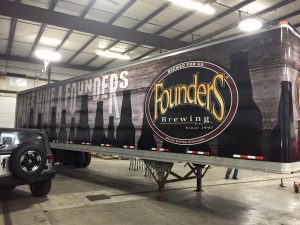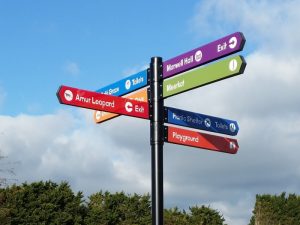Truck wraps have become one of the most effective and impactful ways for businesses to boost visibility and attract customers. Whether you operate a single service truck or an entire fleet, a professionally wrapped vehicle turns every drive into a mobile marketing campaign. From highways to neighbourhood streets, truck wraps deliver constant exposure — reaching thousands of potential customers daily without the recurring costs of traditional advertising. 
The power of truck wraps lies in their ability to combine mobility, visibility and brand consistency. A well-designed wrap communicates your message instantly through vibrant graphics, bold colours and clear information. As trucks naturally move through high-traffic areas, your brand stays in front of diverse audiences, helping build recognition over time. This repeated exposure increases trust and makes your business more memorable, especially for local service industries like plumbing, HVAC, electrical work, landscaping, delivery services and construction.
Truck wraps also add a layer of professionalism that sets your business apart. A branded truck signals reliability and credibility the moment you arrive at a job site. Customers often feel more confident when they see a clearly marked, visually appealing vehicle — it reassures them that they are dealing with a legitimate and established company. In a competitive market, this professional appearance can significantly influence customer perception and decision-making.
One of the major benefits of truck wraps is their versatility. Businesses can choose from full wraps, partial wraps or simple spot graphics. Full wraps cover the entire truck with striking designs that maximize advertising space, while partial wraps offer a cost-effective alternative that still commands attention. Spot graphics provide essential branding elements, such as logos and contact details, in a clean and simple format. Regardless of the style, a well-executed truck wrap ensures your message remains visible and compelling.
Durability is another important factor. High-quality vinyl wraps are engineered to withstand outdoor conditions, including UV rays, rain, snow, dirt and extreme temperatures. With proper installation and care, a wrap can last several years without fading or peeling. This longevity makes truck wraps an excellent long-term investment, offering significant returns compared to the initial cost.
However, the success of a truck wrap heavily depends on the skill and expertise of the sign maker. A professional sign maker does far more than print and apply vinyl — they ensure the wrap is designed for maximum impact and installed with precision. They understand how to create graphics that align with the truck’s contours, doors and panels, ensuring the final product looks seamless and readable.
Illinois Top sign maker knows how to choose the right materials, laminates and adhesives to withstand daily wear. They account for rivets, curves, surface textures and weather exposure to guarantee a long-lasting finish. Proper installation is crucial: a poorly applied wrap can bubble, wrinkle or lift, diminishing the brand’s credibility and reducing the wrap’s lifespan.
When crafted by an experienced sign maker, truck wraps become powerful branding tools that elevate your business everywhere you go. They offer unmatched visibility, long-term durability and a professional appearance that strengthens customer trust. Professional Wraps Illinois will help you make it happen!

 y. Because they occupy an often-overlooked surface, they naturally grab attention without cluttering walls or displays. In retail environments, they guide customers through aisles and promote special offers right where buying decisions happen. In offices or warehouses, they enhance safety by marking walkways, exits, and hazardous zones. In events and showrooms, they help manage crowd flow while showcasing brand colors and logos.
y. Because they occupy an often-overlooked surface, they naturally grab attention without cluttering walls or displays. In retail environments, they guide customers through aisles and promote special offers right where buying decisions happen. In offices or warehouses, they enhance safety by marking walkways, exits, and hazardous zones. In events and showrooms, they help manage crowd flow while showcasing brand colors and logos. Wayfinding signs also contribute to safety and compliance. Emergency exit signs, evacuation diagrams, restroom signs, fire extinguisher indicators, and restricted area notices play crucial roles in keeping people safe. In emergency situations, people need fast and clear information — and wayfinding signs help direct them efficiently. Regulatory safety signage must meet specific standards regarding color, letter height, placement, and readability. These signs protect businesses from liability while creating a secure environment for employees and visitors.
Wayfinding signs also contribute to safety and compliance. Emergency exit signs, evacuation diagrams, restroom signs, fire extinguisher indicators, and restricted area notices play crucial roles in keeping people safe. In emergency situations, people need fast and clear information — and wayfinding signs help direct them efficiently. Regulatory safety signage must meet specific standards regarding color, letter height, placement, and readability. These signs protect businesses from liability while creating a secure environment for employees and visitors.